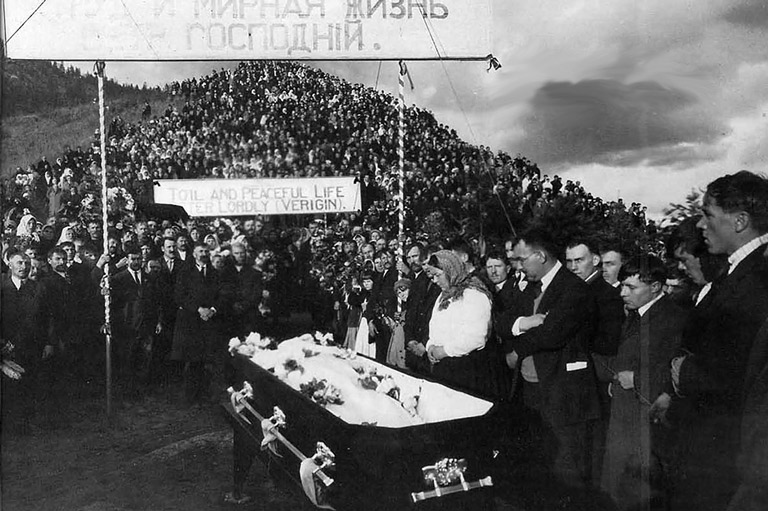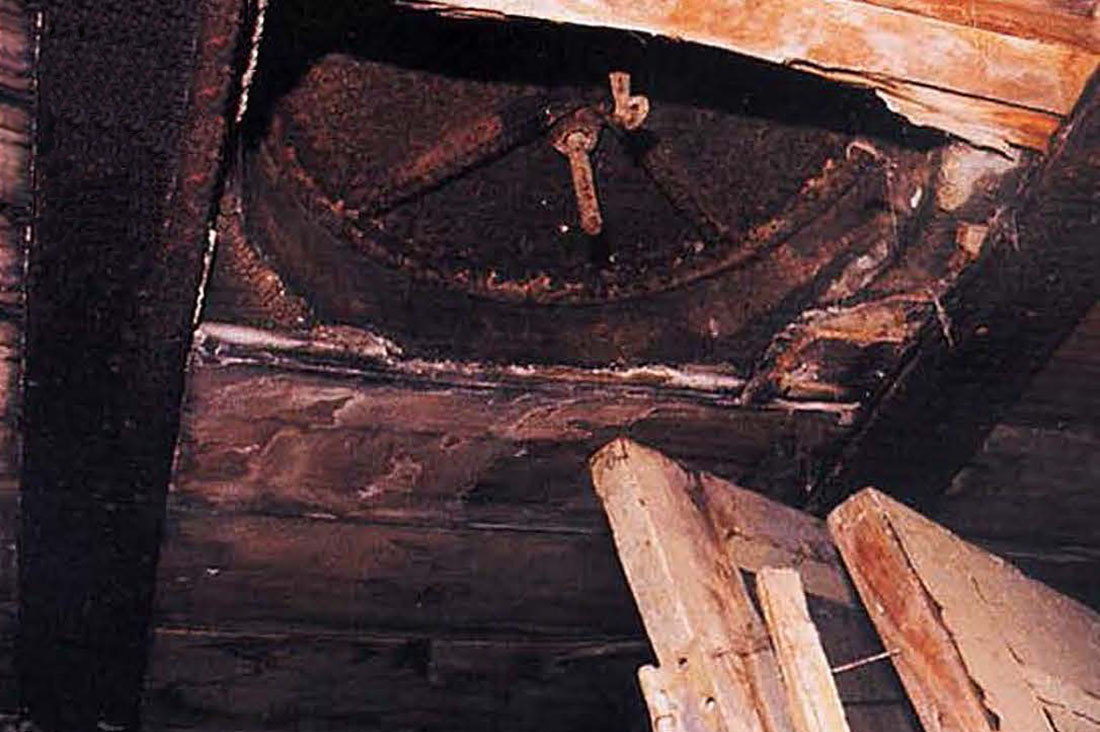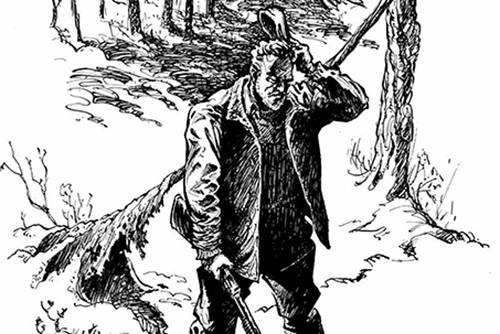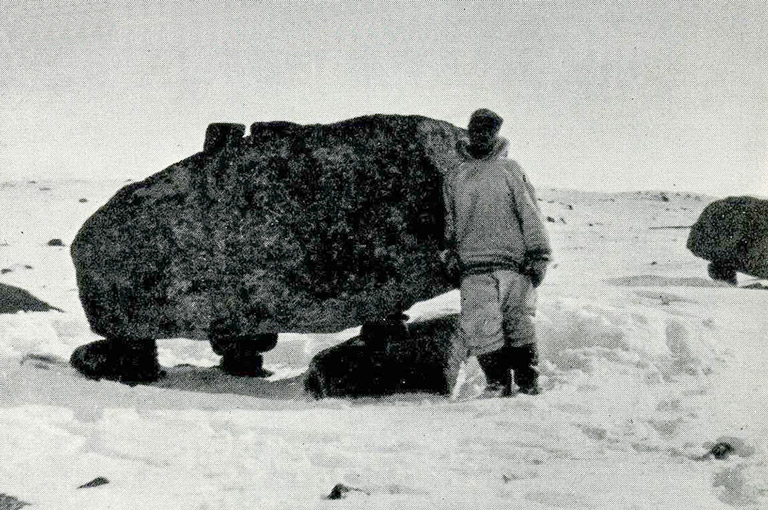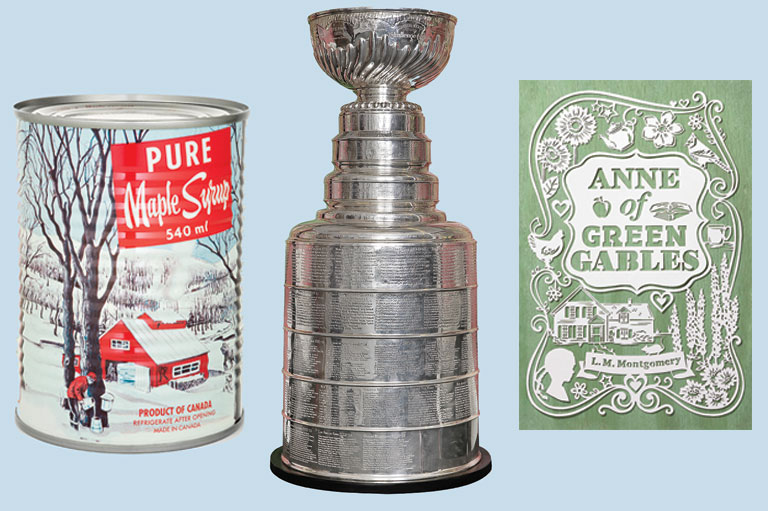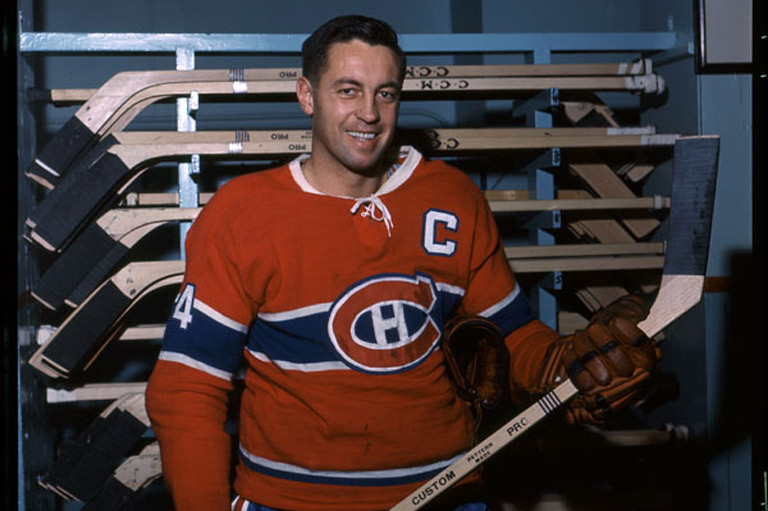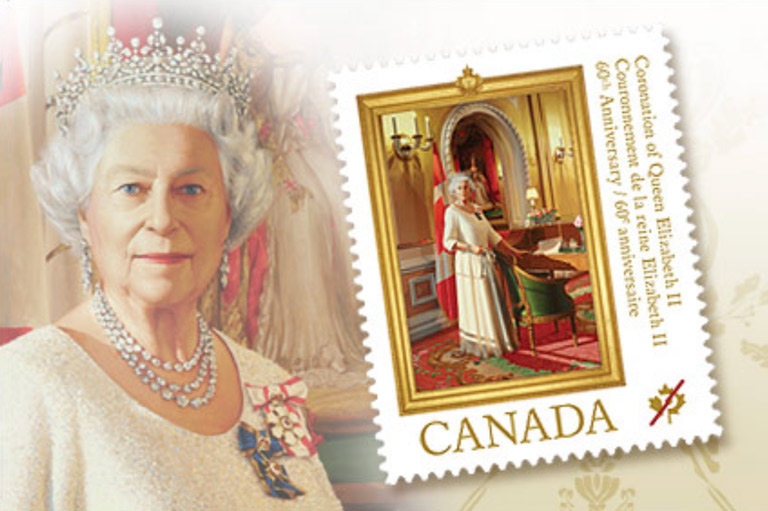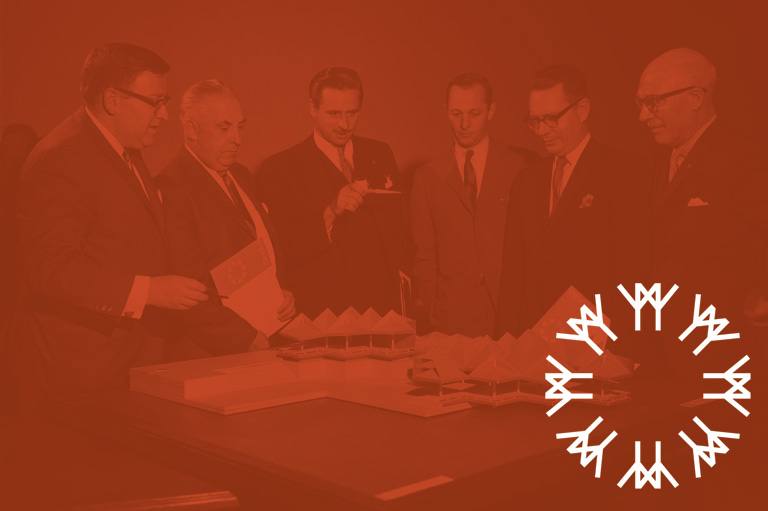Discover a wealth of interesting, entertaining and informative stories in each issue, delivered to you six times per year.
The Mysterious Death of Peter Verigin
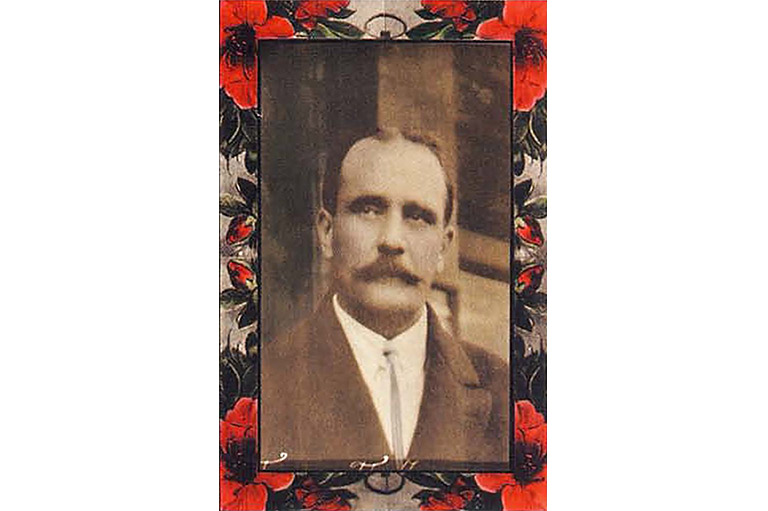
Known by the single name “Lordly,” he lived like royalty among a modest people whose motto was “Toil and Peaceful Life.” He was revered as a semideity. On his travels, he was often accompanied by a choir of young women singing his praises.
He commanded an empire that encompassed tens of thousands of acres of land spread over three western Canadian provinces. His public statements were studied by politicians and became the grist for many newspaper headlines.
Peter Vasilevich Verigin’s aristocratic presence inspired thousands of his Doukhobor followers. But it also incited jealousy, both outside and inside his community.
When 7,500 Doukhobors first arrived in Canada in 1899, they were labelled “Clifford Sifton’s pets” because government critics believed that the new Russian immigrants were receiving excessively generous treatment from the interior minister, who regarded them as a key component of peopling the prairie West.
Farmers and townsfolk in the areas bordering Verigin’s empire resented his economic power. The Doukhobor commune relied on a cheap, internal labour supply and bought its supplies in bulk from outside the region. The contempt of residents in Saskatchewan, Alberta, and British Columbia for these Russian immigrants and their insular way of life was shared by provincial governments. Official bias was demonstrated by restrictions on the Doukhobors’ right to vote, by nonrecognition of their marriages, and by determined efforts to corral their children into state schools.
Sign up for any of our newsletters and be eligible to win one of many book prizes available.
During World War I, people whose sons were forced into military service objected that young Doukhobor men won exemption because their pacifism was recognized by the Canadian government. At the end of the war and into the early 1920s, nativist sentiment mounted, especially in British Columbia. The Doukhobors were a highly visible target, and no Doukhobor was more visible than Peter Verigin.
Verigin also had enemies among the Doukhobors themselves. In the space of a few years after 1899, three internal dissident movements emerged. One was the Independents, who surveyed the prosperity Canada promised and reached out for it. They resented Lordly’s restraining hand on their ambition, and thousands abandoned the commune.
Another challenge to Verigin was Doukhobor zealots, who were appalled by the turncoats in their own ranks. The path of private accumulation chosen by the Independents represented an abandonment of true Doukhobor principles, and the zealots took it unto themselves to warn any of their fellows who contemplated such a desertion. These Sons of Freedom, as they would become known, started by burning threshing machines and other signs of modernity. But by the early 1920s, the radicals were attacking bigger targets—schools built by the Doukhobor commune and even Verigin’s splendid home at Brilliant, in southern B.C. Verigin found himself squeezed between determined opponents of assimilation and governments that were determined to enforce it.
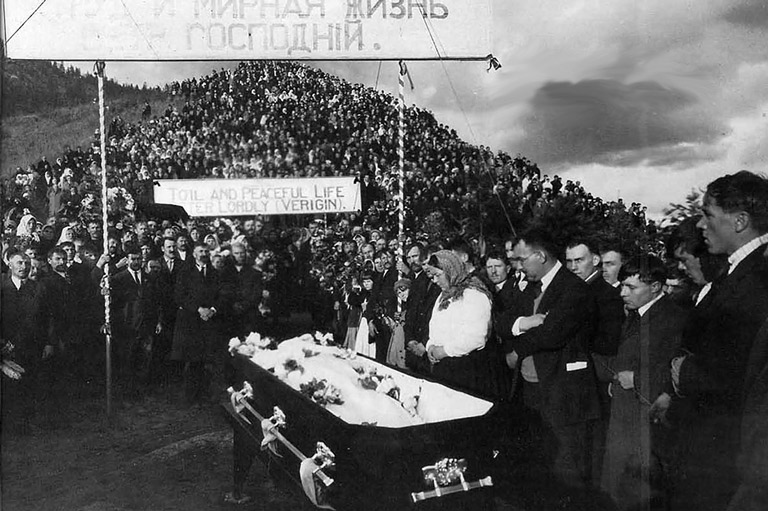
Even among Verigin’s closest followers there were skeptics, dubbed “pseudo-believers.” They were the managers of his vast commercial empire who had acquired a degree of power and comfort unknown to ordinary Doukhobors. Interested in material gain, they supported Verigin as long as he served their interests. By 1924, some were wondering if it was in their interests to see him out of the way.
Verigin also faced a formidable challenge in his son, Peter Petrovich Verigin. Raised in Russia by Lordly’s divorced wife, the younger Verigin visited Canada in 1905. The reuniting of father and son yielded not reconciliation but recrimination. Peter Petrovich, then twenty-five, openly ridiculed his father as a “crook and bandit, liar and cheat,” and an “old reprobate” who had no mind for “anything but young girls.” No one else dared to speak this way about Lordly, and after a few months the son was ordered to return to Russia. Before departing, Peter Petrovich reportedly threatened to kill his father.
By October 1924 Peter Verigin saw before him many challenges. He hinted to his followers that his remaining time with them might be brief. Few guessed just how brief.
Late in the evening of October 28, 1924, Verigin boarded a Canadian Pacific Railway train at Brilliant, B.C., the headquarters of his empire, bound for Grand Forks, 140 kilometres west. The sixty-four-year-old leader was accompanied by his current favourite, twenty-year-old Mary Strelaeff. Already on the train was the newly elected MLA for Grand Forks, John McKie. They were joined at Castlegar by other passengers, including several Doukhobors.
Just past one in the morning, shortly after the train had left Farron, between Castlegar and Grand Forks, a powerful explosion shattered the coach’s dark silence. Centred under Verigin’s seat, the explosion blew away the roof and sides of the car coach. Of the twenty-one persons in the car, all but two were killed or injured. More than half of the passengers were blown clear of the car. The body of Peter Verigin, one leg gone entirely, was found fifteen metres from the car, near John McKie’s. Verigin, Strelaeff, McKie, and six others died in the explosion.
Speculation immediately turned to a plot against Verigin. Members of his own community, particularly the Sons of Freedom, were suspected. The remains of an Italian clock wired to a battery were found blown almost seventy-five metres away by the force of the blast. This discovery turned the inquiry toward the theory that a time bomb was responsible.
The CPR wished to discount any claim that the gas used to heat and light the car caused the blast. This might explain why a CPR investigator pointed to a mysterious and never-located Russian watchmaker, Metro Grishen, whose bombmaking expertise could have been used by dissidents within the Doukhobor community.
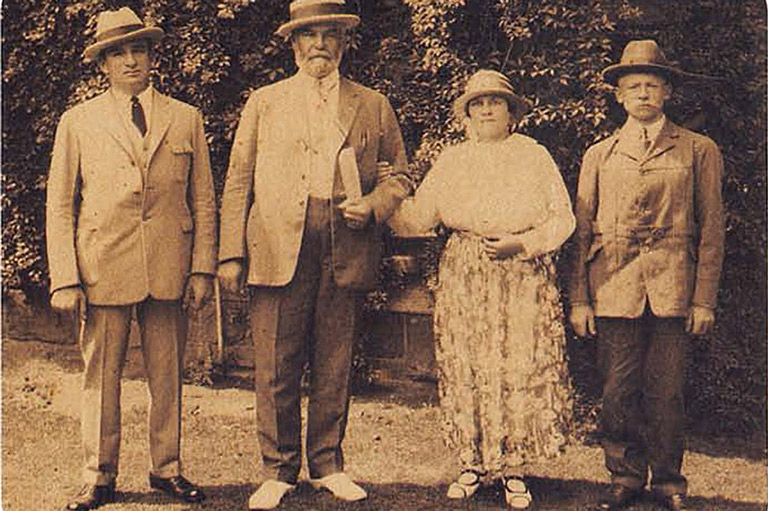
But Grishen could equally have been a tool of the Soviet government, intent upon punishing Verigin’s affront to the USSR. Verigin’s star was not high in Russia. Soon after the Bolshevik Revolution, Soviet officials had made overtures to Verigin, inviting him and his followers back to Mother Russia to assist in its reconstruction. The Doukhobors, after all, were skilled farmers who knew how to operate a commune. But after considering the idea, Verigin demurred, snubbing the Soviets.
In the 1960s, the RCMP would devote many hours to tracking down an entirely different theory—that Verigin’s own son, Peter Petrovich, was behind his father’s death.* The RCMP concluded in 1963 that there was too little evidence to confirm or refute this theory. But one fact is certain: The younger Verigin would become the supreme Doukhobor leader in 1927 after heeding the call from the Doukhobor community to abandon Russia and come to Canada.
Another view, put forward by many Doukhobors at the time and that some continue to believe to the present day, was that the Canadian government had assassinated their revered leader.
Yet another theory suggests that the American Legion and the Ku Klux Klan from Oregon killed Verigin, in order to throttle his contemplated move to Oregon. In early 1924 Verigin had considered relocating his beleaguered people. He visited Oregon and bought land there. Locals feared any transfer of pacifist Russian “communists” to the U.S., and the prospect outraged the American Legion and the Ku Klux Klan.
An intensive investigation by provincial police and the CPR yielded nothing. A provincial government reward of $2,000 for information leading to an arrest and conviction led to neither. Accident or assassination? Every possible explanation of the cause of Peter Verigin’s death still remains nothing more than theory.
* The theory was advanced by journalist Simma Holt, who was investigating the Sons of Freedom, a small radical Doukhobor splinter group, for her book Terror in the Name of God, published in 1964. Holt concluded that the younger Peter Verigin was the instigator of Freedomite violence, which had seriously escalated by the early 1960s. Since many Doukhobors were convinced the Canadian government killed Peter V. Verigin—a conviction that seemed to justify retaliatory violence by the Freedomites—some members of the RCMP set out to prove Holt’s thesis.
At Canada’s History, we highlight our nation’s past by telling stories that illuminate the people, places, and events that unite us as Canadians, while understanding that diverse past experiences can shape multiple perceptions of our history.
Canada’s History is a registered charity. Generous contributions from readers like you help us explore and celebrate Canada’s diverse stories and make them accessible to all through our free online content.
Please donate to Canada’s History today. Thank you!
Themes associated with this article
You might also like...

Canada’s History Archive, featuring The Beaver, is now available for your browsing and searching pleasure!

Beautiful woven all-silk necktie — burgundy with small silver beaver images throughout. Made exclusively for Canada's History.


